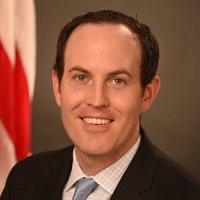 By Seth Pazinski / Director, Office of Planning, Evaluation, and Analysis
By Seth Pazinski / Director, Office of Planning, Evaluation, and Analysis
Twitter: @ONC_HealthIT
Data released by the Office of the National Coordinator of Health Information Technology (ONC) report for the first time, nationally representative measures on electronic health record (EHR) adoption and health information exchange among skilled nursing facilities (SNFs). Most SNFs (64 percent) used EHRs to manage patient health information in 2016. About 22 percent of SNFs reported participating in a state or regional health information organization (HIO); with a fifth of facilities (18 percent) using both an EHR and an HIO.
SNFs provide a variety of short-term skilled nursing care and rehabilitative services. People that require SNF services may have complex chronic care needs that result in frequent transitions between their homes, acute-care, and SNF settings. These transitions may be complicated by a lack of communication or care coordination. Health information technology (IT) can facilitate communication and care coordination in SNFs where transitions of care are common.
In 2016, nearly a third of SNFs electronically exchanged key clinical health information with providers outside their organization. However, SNFs that used an EHR and HIO electronically exchanged patient health information at five times the rate of those facilities that did not use an EHR or an HIO. Similarly, nearly all facilities that used both an EHR and an HIO had patient health information electronically available from outside sources at the point of care. This estimate is nearly three times the rate of SNFs that did not use an EHR or an HIO.
Although the data are promising, EHR adoption rates among SNFs lag compared to acute-care settings, as do rates of engagement in health information exchange. Prior research identified barriers to EHR adoption across long-term and post-acute care settings, the most salient of which is the initial cost of EHR adoption, followed by user perceptions, and implementation problems among others. It is important to note that SNFs were not eligible to participate in programs such as the Medicare and Medicaid Electronic Health Record Incentive Programs. However, today, federal and state efforts are underway to advance interoperability among these settings of care.
New federal efforts include shifts in Medicare payment that focus on value and population health management. Additionally, the Improving Medicare Post-Acute Care Transformation (IMPACT) Act of 2014 requires SNFs to report certain standardized patient assessment data through the Minimum Data Set. These data elements must be standardized and interoperable to allow for their exchange and use amongst post-acute care providers and other providers. Lastly, Medicaid HITECH funds are now available to support states in their initiatives to support and expand interoperability and data sharing.
The newly released data provides a first glimpse into how SNFs adopt and use health IT. The path forward requires leveraging the lessons learned to close disparities in health IT adoption and use between skilled nursing providers and providers in acute-care settings. Eliminating these gaps will be critical to ensuring that all healthcare providers, including those in institutional and long-term and post-acute care settings, can leverage health IT to deliver coordinated care with data that follows the person across care settings.
This post was originally published on the Health IT Buzz and is syndicated here with permission.
